This post will cover the various guitar pedals that play an essential role in the sound of metal music. If you’re a metal guitarist looking to expand your sound palette but unsure of what pedals to add to your pedalboard, this article is for you.
Guitar pedals often play a crucial part in achieving many sounds that are integral to many music genres. The metal genre of music has a distinct sound that can be achieved by using guitar pedals. We will give a brief overview of how each pedal plays a role in creating a great metal guitar tone.
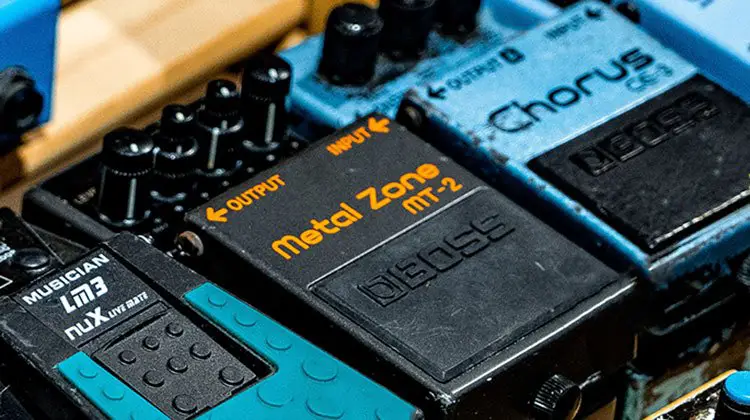
Metal Distortion Pedals
Perhaps the most characteristic tone in metal music is the distorted guitar tone. Many metal guitarists may opt to use the distortion that comes from an amplifier. Just as many guitarists opt to use a distortion pedal with a clean amp. For players relying on amp distortion, it’s not uncommon to use a pedal to enhance the amp tone and distortion. Guitar tone can be a very personal thing, so these choices rely solely on your preferences.
Distortion pedals will allow you to introduce a level of intensity according to your tastes. Multiple distortion pedals in a signal chain can enable the guitarist to have a few different distortion flavors and gain stages available in their sonic tool kit. Often, many guitarists will have a distortion pedal on at all times, for their basic rhythm tone. Then engage another distortion pedal to provide extra gain and drive at key moments. This effectively boosts guitar leads and other parts to have more clarity in the sound mix.
Within the distortion family, there are a few different types of pedals that you may opt for. Each has their own unique characteristics so it can’t hurt to try out one of each.
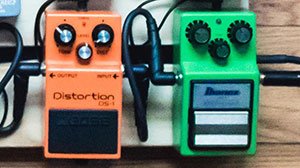
Overdrive
Starting with the least distorted pedal of the distortion family is the Overdrive pedal. Typically used for musical situations outside of metal, these pedals can provide great utility for the metal guitarist in certain situations.
Overdrive pedals are excellent for introducing a low level of clipping and gain into a signal chain. Traditionally, these pedals are best known for adding a little “dirt” to a tone. This can be an excellent utility for musical sections that require slightly less distortion. They can also add another level of distortion when used in conjunction with a standard distortion pedal.
The tonal range of the overdrive pedal can span from a transparent boost to a somewhat “dirty” tone that is just shy of what a dedicated distortion pedal can produce. These pedals also help push a tube amp into a more distorted territory. Although, these pedals may not be your first thought they shouldn’t be overlooked.
Distortion
Dedicated distortion pedals can be thought of as a pedal that produces more clipping and gain than an overdrive pedal. These pedals can provide an extreme level of distortion. Having a dedicated distortion pedal can help ensure that you will always get a consistent distortion tone with each performance. They can work exceptionally well with those playing with solid-state amplifiers.
Many times, distortion pedals will offer two levels of distortion onboard the pedal itself. One provides a lower level of distortion ideal for your “baseline” distortion sound. The other level provides a boost which adds more gain and distortion on top of the baseline tone. The added boost is ideal for leads and other high-intensity guitar lines.
Fuzz
Fuzz pedals provide a unique flavor of distortion that sets them apart from overdrive and distortion. Overdrive and distortion pedals can be thought of as siblings, while the fuzz would likely be a “distant cousin.”
Fuzz pedals create a tone synonymous with its name: it saturates the guitar tone in a fuzzy coating. Fuzzes can also provide fascinating sounds, ranging from heavy, fat, and squashed sounding tones to tones that have screaming sustain.
Even though the fuzz pedal is perhaps best known for its early use with guitarists such as Jimi Hendrix, the fuzz pedal is a very versatile guitar effect that can provide some very distorted and unique tones. Like the overdrive, these types of pedals should not be overlooked.
EQ Pedals
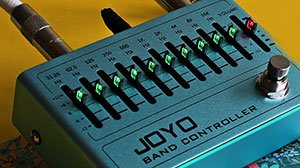
An equalizer pedal is a very flexible and valuable tool to have in a signal chain. Guitarists can shape and morph their guitar tone to their liking (which is especially useful for distorted tones). Despite the basic functionality of these pedals, they can also provide extra boost and gain to a guitar tone.
For more info about EQ pedals for metal see our Best EQ Pedal for Metal post.
Noise Gate/Suppressor Pedals
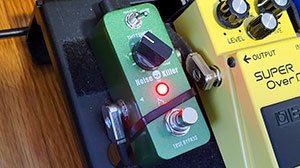
It is no secret that guitar tones can become polluted with unwanted noises like string noise, buzzing electronic sounds, and more. This unwanted noise gets amplified more with high-volume, high-gain guitar settings. This is because every nuance of detail, including noise coming from other pedals, is being boosted to an extreme. It causes noise when there shouldn’t be, especially in moments where silence is needed.
For moments like these, a noise gate (or suppressor) pedal can be an excellent remedy. When placed towards the end of the signal chain, these pedals will help clean up any excessive/unwanted noise that may be present in the guitar signal. The clarity provided by these pedals helps to ensure that your guitar tone can remain pure and any unwanted noises do not color your sound.
Compressor Pedals
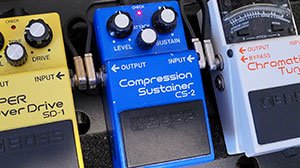
Distortion can sometimes lend itself to creating less-than-desirable muddy tones that feel too loose and indistinct. Despite any effort to “clean it up,” you may lose your ideal level of distortion. Compressors can play a vital part in giving your guitar tone a tighter sound.
These pedals essentially balance the dynamic range of the guitar signal to produce an even signal. The result is that tones that may have too much/too little in certain dynamic ranges will be balanced and provide extra punch and sustain the tone. A drawback to compressor pedals is that you may lose your dynamics (with the guitar signal emitted from the pedal being evened out), though this can be easily remedied with a blend knob setting.
Read our Best Compressor Pedal for Metal post to learn about some of the compressor pedals for metal.
Harmonizer Pedals
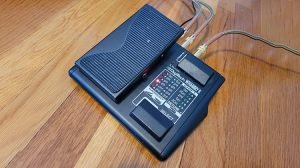
Aside from heavy, distorted guitars the one thing that is one of the most quintessential aspects of metal music is harmonized guitar lines. Throughout the music genre, harmonized guitar lines have become a classic part of the genre’s sound. They can be pretty effective when the musical lines are executed with extreme accuracy and precision.
Perhaps the most significant caveat to harmonized guitar parts is that it takes more than one guitarist. In a band with multiple guitarists, this likely isn’t an issue. Still, it can be a problem for bands that only have one or two guitarists. Especially when the heavy rhythm guitar will likely have to play the harmonized line, leaving a massive hole in the band’s sound.
An excellent solution for this issue is the harmonizer guitar pedal, allowing a single guitar player to play harmonized lines. Many harmonizer pedals will allow you to choose the key of the interval being harmonized, and the tonality (major/minor) of the harmonization.
Doubler Pedals
Live performances can often lack the possibilities that are offered in the studio. Suppose you’re a guitarist playing specific musical sequences that require doubled-up guitar parts (such as a guitar part recorded in a studio with multiple guitar tracks playing the same guitar lines). In that case, a doubler pedal can be a helpful pedal to have in a signal chain.
The doubler pedal essentially doubles (or even triples or quadruples) your guitar signal, allowing your guitar tone to come across with a thicker sound. With a doubler pedal, you can ensure that the integrity of a song (especially one featuring heavy multitracked sequences) can remain true to form.
Modulation Pedals
Aside from pedals that help with the core sound of the metal guitarist’s tone, modulation pedals can play an essential role in providing unique sounds that can be used in several different ways. Whether you’re looking for extra depth and dimension to your leads or dynamic textures to your tone, modulation pedals (particularly the chorus and flanger pedals) may be the ticket for you.
Chorus Pedals
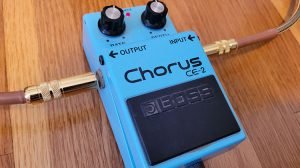
While a doubler pedal essentially multi-tracks your guitar part in real-time, a chorus pedal (at its primary function) adds depth to a guitar tone by making it sound as if a choir of guitars is playing it. However, chorus pedals can also provide other characteristics to a guitar tone.
Chorus pedals can be utilized in a manner that they add a sense of animation to your guitar tone, taking on characteristics of a vibe pedal or a rotating Leslie speaker. Some pedals even have slight pitch-shifting capabilities and can help you create distinct and original sounds that you can apply musically. Many pedals also have a stereo output for use with two amplifiers, furthering the depth this pedal can provide.
Flanger Pedals
Flanger pedals are another viable pedal that can add unique (yet classic) textures to a guitar tone. Flangers are best known for the “airplane” sound, providing a sweeping harmonic overtone to the guitar’s tone. This flanging effect is done by essentially doubling the guitar line and manipulating the delay of the recorded guitar line. Even when used subtly, flanger pedals can provide tasteful enhancements to any guitar part.
Wrapping It Up
Metal music is often defined by heavy, distorted guitars, which can be fun for any guitarist. Overdrive, Distortion, and Fuzz pedals can all provide a level of “dirt” to a signal. Each has there own style and unique character. Despite the differences, each can play an essential role in your tone. Whether for a slight boost of extra distortion or all-out saturated mayhem.
However, heavy distortion and high-gain situations can invite issues such as unwanted noises. Noise Gate/Suppressor pedals can play an essential role in cleaning up a guitarist’s tone.
For the guitarist looking for thicker tones, EQ pedals are another hallmark of metal music. EQ pedals can help thicken up a tone and allow the tone to be shaped to the guitarist’s preference.
Compressor pedals can also provide thicker tones and more sustain.
A Doubler pedal can simulate thick multitracked guitar parts in real-time, helping recreate the multi-tracking capabilities of the recording studio.
However, there are a few characteristic tones that can not be performed live by a single guitarist. This is especially true of harmonized guitar lines. Fortunately, Harmonizer pedals can help this situation by providing the opportunity to play harmonized lines from a single guitar.
Modulation effects such as Chorus and Flanger pedals can help add extra dimension and depth to guitar tones. Effects such as these can help musical moments stand out in a unique fashion.
The saying, “Variety is the spice of life,” is especially true with guitar effects and tones. One of the most beautiful aspects of music is the endless possibilities available to any musician. Guitar effects play an important part in music. Helping fuel creativity and push the boundaries of what was previously thought possible with music.
Related Posts
What Pedals Should Every Guitarist Have?
